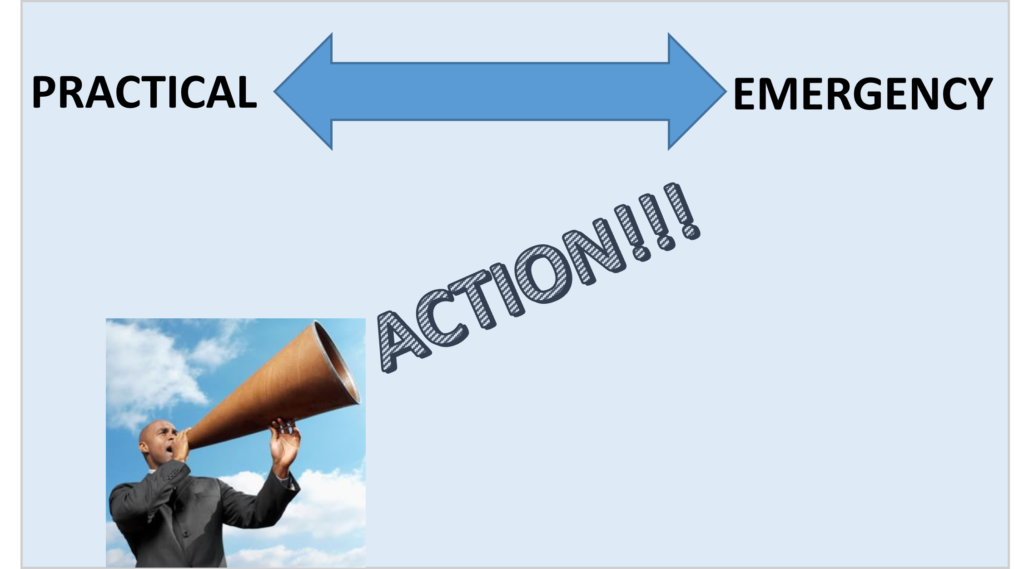 As so often happens in the classroom, the best ideas come from the students. In a reflection on playing with a climate simulation raised a point about a certain course of action being “… a practical good focus for people and for industry. It wouldn’t feel like the end of life as we know it and would in fact make things achievable.” This triggered a discussion on whether, at this point in the game, it was still okay to rely on practical or comfortable measures, or whether it was time to be more urgent – to pull the fire alarm so-to-speak?
As so often happens in the classroom, the best ideas come from the students. In a reflection on playing with a climate simulation raised a point about a certain course of action being “… a practical good focus for people and for industry. It wouldn’t feel like the end of life as we know it and would in fact make things achievable.” This triggered a discussion on whether, at this point in the game, it was still okay to rely on practical or comfortable measures, or whether it was time to be more urgent – to pull the fire alarm so-to-speak?
Is it best to recommend changes that are palatable and hope they can be scaled up in time. Or is there a point where it is best to present shocking bad news and hope that a massive intervention can stimulate our human instinct to pull together in crisis? We do know, from experience, that “bad news” is a risky strategy that is just as likely to trigger denial than it is action.
Let’s back up a bit, and think about how we got here. Futurists and many others have been warning about climate change for decades now. But here we are, vastly unprepared, and whistling as the graveyard approaches. Starting to staff up and take action, but probably too little too late – still better than nothing of course. This is not a new problem, and it takes lots of different forms. Prevention of potential future “bads” is a really, really hard sell in the present. Much easier to kick the can down the road.
Where do you stand on the practical vs urgency continuum? – Andy Hines

I think the “Practical vs Emergency” framing pushes everyone into only considering the current system of immediate concern (ourselves, our org, our industry, etc). That implicitly bounds what are acceptable and unacceptable decisions before we ever look at the most viable adjacent futures which address the crisis and our needs. We eliminate the most viable solutions by reinforcing present-tense blind spots. As Upton Sinclair said, “It is difficult to get a man to understand something, when his salary depends on his not understanding it”.
We face the maddening contradiction of needing both Incremental and Transformative systemic change simultaneously. So how do we pull that off?
One way is to look for examples for inspiration. One such example of Intentional Incremental Transformative Change (IITC?) happened in 2001. The relatively new satellite TV service, DirectTV, had a hacker problem. As soon as they released a security fix for their service, hackers would reverse engineer it allowing individuals to bypass security and receive all channels without paying. They solved the problem by releasing more frequent updates. Those were easily defeated too. However, the hackers did not know that an entirely new, vastly more secure software system was being embedded one piece at a time within each update. That ensured that all the hackers adopted the new code in every release. Once all the pieces were in place, DirectTV pushed a final change that switched on the new code in the set-top boxes. Simultaneously, they turned on the new back-end code running on their servers. Old set-top code no longer could use the new security system locking them out until they updated their set-top boxes. Anyone who updated to the set-top firmware could no longer hack the boxes to unlock free channels. Intentional incremental change worked with the old system until the final piece of the new system was in place. Once that happened, the change was immediate and comprehensive.
Could we do something similar with our current systems which created the climate crisis? Can we simultaneously explore Practical & Incremental adjacent futures that build out to a planned Emergency Transformation to a sustainable system?
Sounds like an interesting area of exploration. I would think this would apply to small transformations as well as big ones.
Food for thought.
Link to the example: https://hardware.slashdot.org/story/01/01/25/1343218/directvs-secret-war-on-hackers#:~:text=One%20week%20before%20the%20Super,smart%20cards%20and%20destroyed%20them.